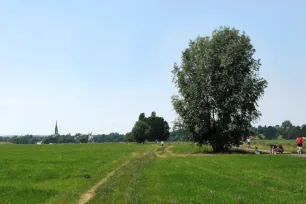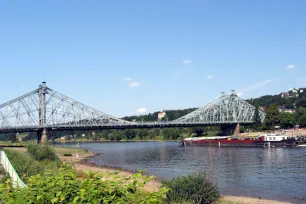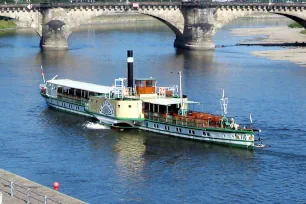Developed during the eighteenth and nineteenth centuries, the Elbe Valley of Dresden boasts natural beauty as well as historic and cultural sites.
Where’s the Valley?
Extending about twenty kilometers (about 12 miles) from the Pillnitz Palace in the southeast to the Übigau Palace in the northwest, the area known as the Elbe Valley includes the majority of the city of Dresden.
Declared a UNESCO World Heritage Site in 2004 due to its diverse architecture, cultural landscape, and outstanding land use, the Elbe Valley boasts everything from sixteenth-century monuments and parks to twentieth-century suburban villas to valuable natural features that make the area a true gem in Germany’s crown. The site was delisted however in 2009 due to the shortsighted decision to build a new four-lane bridge.
What to See
The historic skyline of Dresden’s Old Town is the centerpiece of the Elbe Valley. Visitors to this area can enjoy a wealth of sights, including the Royal Palace, the Cathedral and Church of Our Lady, the Semper Opera House – a magnificent high Renaissance style building, and the late Baroque-style Zwinger Palace.
Renaissance fortifications and late nineteenth-century palaces also line the banks of the beautiful Elbe River, making a trip down this body of water seem like travel to a different time and place. Terraced slopes along the river still produce grapes for German’s wine industry, and small villages maintain their old charm and delight visitors young and old.
Don’t miss an opportunity to see the magnificent Blue Wonder steel bridge and remember to take a ride on the single-rail suspension cable railway and the funicular that are still a part of the Elbe Valley landscape more than one hundred years after they were constructed.
A must for any visitor is a journey on a paddle steamer through the Upper Elbe Valley of Dresden. The Saxon Steamship Company offers passenger sailings daily on its fleet of eight paddle wheelers, providing some of the best views available of this picturesque countryside.
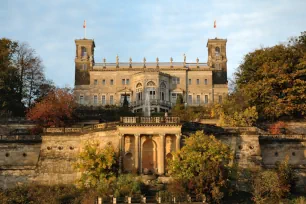
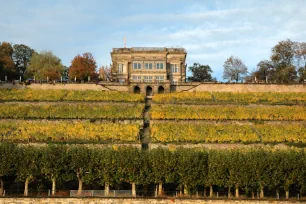
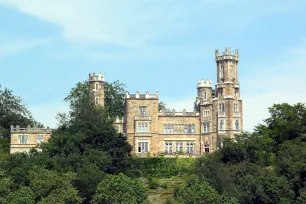
A trio of Castles
Three of the valley’s best known buildings are a trio of castles not far from Neustadt towards the Blue Wonder. The castles – Albrechtsberg Castle, Lingner Castle (aka Villa Stockhausen) and Eckberg Castle – are located adjacent to one another.
Albrechtsberg Castle is a large, palatial villa built in the mid-nineteenth century by Prince Albrecht of Prussia. The building’s classical design was inspired by ancient Greek and Roman buildings, as well as Italian Renaissance villas. The castle was declared a national historic monument in 1977. Today it is used for a multitude of events; the whole castle as well as individual rooms can be rented for all sorts of occasions.
The adjacent Lingner Castle was built between 1850 and 1853 for Baron Von Stockhausen, Chamberlain of Prince Albrecht of Prussia. The Prince himself stayed here until his own castle was finished in 1854. The villa was built in classicist style after a design by architect Adolph Lohse.
The third castle is the Eckberg Castle, a Tudor-style building constructed between 1859 and 1861. It was designed by Christian Friedrich Arnold, a student of Gottfried Semper. The castle is now operated as a luxury hotel.
- Next: New Synagogue
- More Sights & Attractions in Dresden



